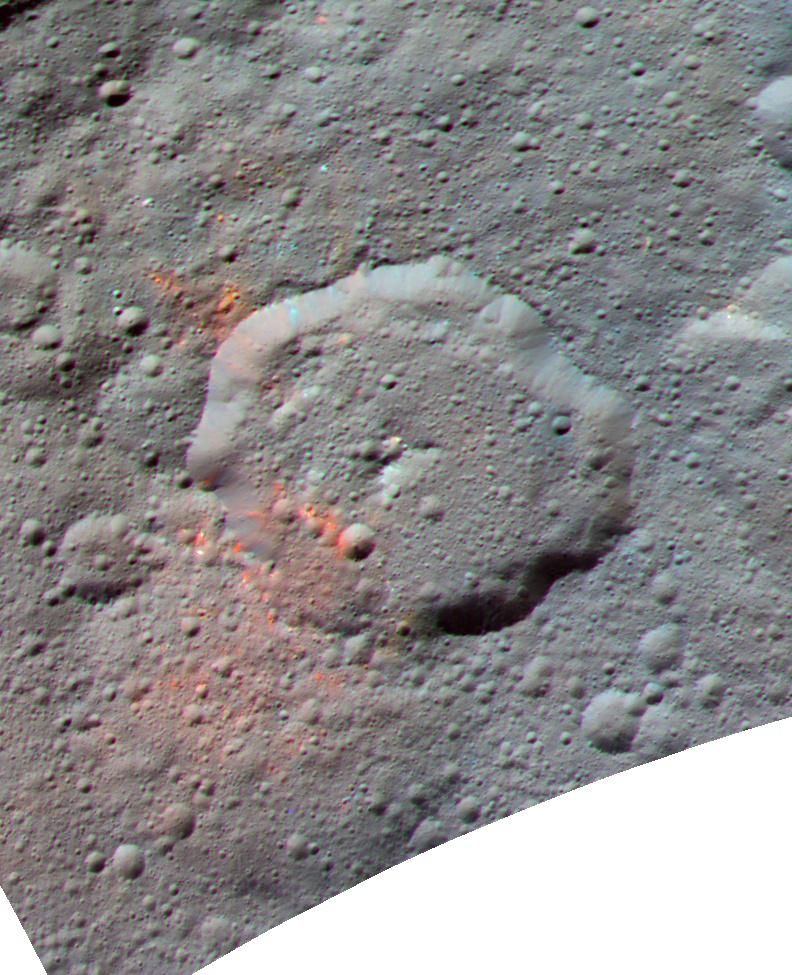Organic Material Found on Ceres Hints at Potential for Life
Scientists are fired up about these building blocks of life
/https://tf-cmsv2-smithsonianmag-media.s3.amazonaws.com/filer/bf/7c/bf7cdaea-9870-4bac-a1b4-e653ff9145ed/pia21079_hires.jpg)
The dwarf planet Ceres may seem to be little more than an asteroid. It has an inhospitable surface temperature of 100 degrees below zero by day and 225 below at night. But interest in the rocky, chilly little celestial body just heated up, reports Amina Khan for The Los Angeles Times. NASA’s Dawn mission has found evidence of organic molecules there.
In a new paper published in the journal Science, researchers describe organic compounds spotted by Dawn’s Visible and InfraRed Mapping Spectrometer instrument. The spectrometer can detect a range of wavelengths of light—some of which revealed the clear signatures of organic materials on the planet’s surface, especially in a crater called Ernutet.
The Dawn probe has been orbiting Ceres since 2015. It’s the inner solar system’s sole dwarf planet and the biggest object in the huge asteroid belt that sits between Mars and Jupiter. Ceres is a protoplanet—a body that seems to be slowly developing into a planet. That means that it’s a kind of look back in time for scientists, who hope to use their discoveries there to learn more about how other planets formed.
As Khan notes, it’s not yet clear what the organics are. The signature Dawn spotted appears to be one of aliphatic organic matter—chains of organic compounds similar to the carbon-based chemicals asphaltite and kerite. Those chemicals could be the mark of ancient life.

It’s the first time scientists have spotted clear building blocks of life on the main body of an asteroid belt, says NASA in a press release. You’d think that their location on a frigid dwarf planet in the middle of an asteroid belt could be a clue as to where they came from. One possibility is that they were left on Ceres when the planet rammed into some other body in the asteroid belt.
But researchers don’t think that’s the case. They say that it’s unlikely such organic material could survive a huge impact and that it’s more likely the compounds originated on Ceres itself. Other nearby chemicals originated on Ceres, adding artillery to the hypothesis that the newly found organics did, too. They may have been present during a hot, water-rich time on the planet.
Scientists think that Ceres might have an ocean beneath its surface that’s kept from freezing by remnants of the high temperatures it had when it first formed. In a commentary that accompanies the Science study, an astronomer from the European Space Agency suggests that it might have already developed “primitive life” given that potential water and the newly discovered organic materials.
That’s a lot of "coulds" and "mights." But it doesn’t mean the dwarf isn’t worth studying. Dawn will continue to orbit Ceres, and new discoveries or clarifications could be just around the corner. Perhaps one day, a craft will actually land on Ceres and provide even more information. Though that’s not part of Dawn’s current mission, excitement about the potential for life on the protoplanet could one day fuel future exploration—and a better understanding of what once happened on Earth.
/https://tf-cmsv2-smithsonianmag-media.s3.amazonaws.com/accounts/headshot/erin.png)
/https://tf-cmsv2-smithsonianmag-media.s3.amazonaws.com/accounts/headshot/erin.png)